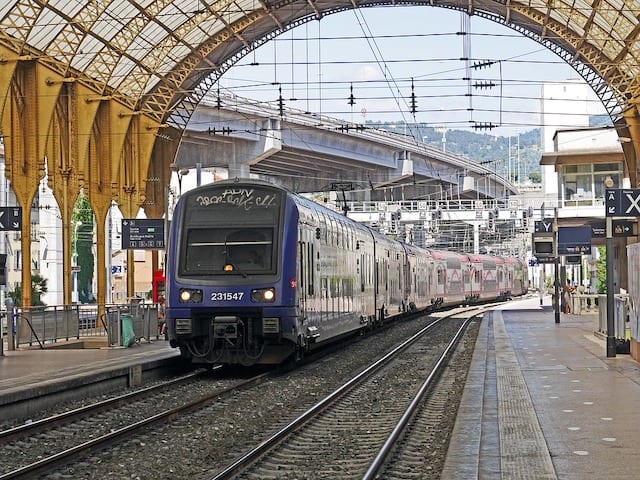As France prepares to lift its lockdown, train services are gradually resuming across the region, albeit at a reduced capacity.
From Friday 8th May, SNCF initiated a limited service, which comes as welcome news for those who rely on rail travel as their sole means of transportation. But all is not completely back to normal just yet, with only around 20% of main line services resuming.
The government said on Thursday evening that public transport services between regions would be severely limited in the coming weeks to encourage people to avoid unnecessary travel.
From Monday 11th May, regional TER lines will be running at anywhere between 40% and 50% of the usual capacity, with travel for passengers limited to 100 kilometres until 2nd June, unless it can be proven that the traveller needs to be somewhere for professional or otherwise compelling purposes.
For TER PACA riders, this means that up to three out four trains will be running on the most heavily travelled lines during rush hours, but in general the frequency will be a bit less. Half the regular number of trains will be running for many lines, with the lesser travelled ones seeing one in three. Routes typically used during tourist season or for occasional travel will not resume at all until the end of May.
TGV services will slowly but surely return as well. Almost half the trains will be back online again by the end of the month. From 11th May, there will be one Paris to Nice round trip and a very limited Lyon-Marseille-Nice service.
Italian company Thello won’t kickstart train services again until 18th May. For now, the Marseille-Nice-Milan route is cancelled in both directions. From the 18th, circulation will slowly resume with two daily round trips between Nice and Milan. Trains going to and from Marseille will start back later.
Large capacity trains will be in operation, though the capacity will be greatly reduced as only one in two seats will be usable under the health regulations. This translates to 35% to 40% capacity.
“SNCF is actively working with businesses to ask them for their recovery estimates but also to encourage them to continue teleworking and staggering schedules,” the company has said. “Similarly, the South Provence Alpes Côte d’Azur region has brought together as a transport organising authority, as requested by the state, transport stakeholders and user associations to raise this point.”
SNCF has incorporated a raft of measures to ensure sanitary rules are followed. Police and railway security guards will be on hand at larger stations to make certain everyone complies with mandatory mask-wearing. Incoming and outgoing traffic will be choreographed and markings on the ground will assist passengers in knowing the basics of where to wait and how to proceed.
Eventually, masks and germ-killing gels will be on sale at Relay and Selecta. Gel distributors will be installed at major stations, as well. Finally, there will be updated cleaning frequency schedules posted on trains and in stations.
The SNCF has asked that travellers “be responsible in mobility and (to) adopt the behaviours which protect themselves and protect others.”
As it does during times of strikes, SNCF will be publishing lists of the trains that are running by 5pm the prior afternoon. They have stated they will be flexible about exchanges and refunds and ask passengers to buy online as much as possible.
For daily Monaco train services, check this website:
https://www.garesetconnexions.sncf/fr/gare/frxmm/monaco-monte-carlo
Photo: Pixabay
